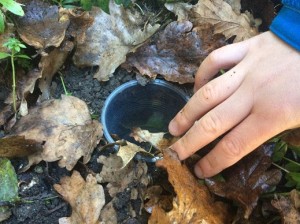
Learning to observe and record wildlife is vital for understanding the natural world and conservation. Wildlife is all around us so it’s important to focus, to start with, on one group of animals or plants, and on a local patch – a garden, school grounds or woodland. For beginner groups invertebrates or ‘minibeasts’ offer many opportunities for study: whether they crawl, creep or buzz they hold endless fascination particularly for young observers. Follow these fieldcraft tips to help develop young enquiring minds.
- Large and colourful insect species such as butterflies and dragonflies are fun to observe and identify, especially when viewed through binoculars. They have fascinating life cycle changes to explore and this helps develop the art of questioning – what sort of habitat are they likely to be found? Where do they lay their eggs? When do you see them flying?
- Take part in The Butterfly Conservation’s ‘Big Butterfly Count’ a nationwide survey to help monitor decline in butterfly populations http://www.bigbutterflycount.org/
- Systematic ways of studying minibeasts can be explored. Butterflies are ideal for introducing transect studies – recording the number of species over set distances throughout a period of time. Dragonfly and damselfly larvae can be collected using a pond net for population and water quality studies. Introduce the concept of food chains / webs (dragonfly larvae are a top predator in the pond – their extendible jaws are amazing!).
- Tracking other invertebrate species depends on a knowledge of how, where and when to look. Children are born naturalists and don’t need much encouragement to search for species under stones, bark and rotting logs. This keenness can then be focussed to investigate different habitats in your local patch and develop field work skills and enquiry. For example, use a sweep net to collect meadow invertebrates and compare findings to those collected using a beating sheet under woodland trees. A great investigation to see how invertebrates are suited to their environment in different ways.
- Finally making collection traps such as pit fall traps is very exciting for young ‘minibeast’ hunters. Set traps to compare different habitats: woodland with meadow or playfield with a garden shrubbery. The importance of caring for and returning finds to their site of capture should always be taught.
